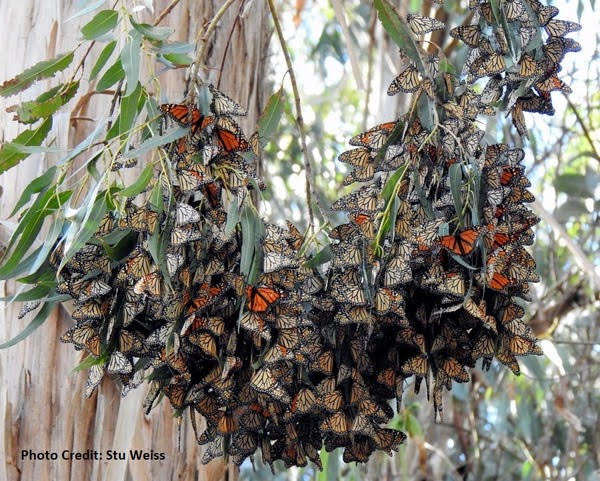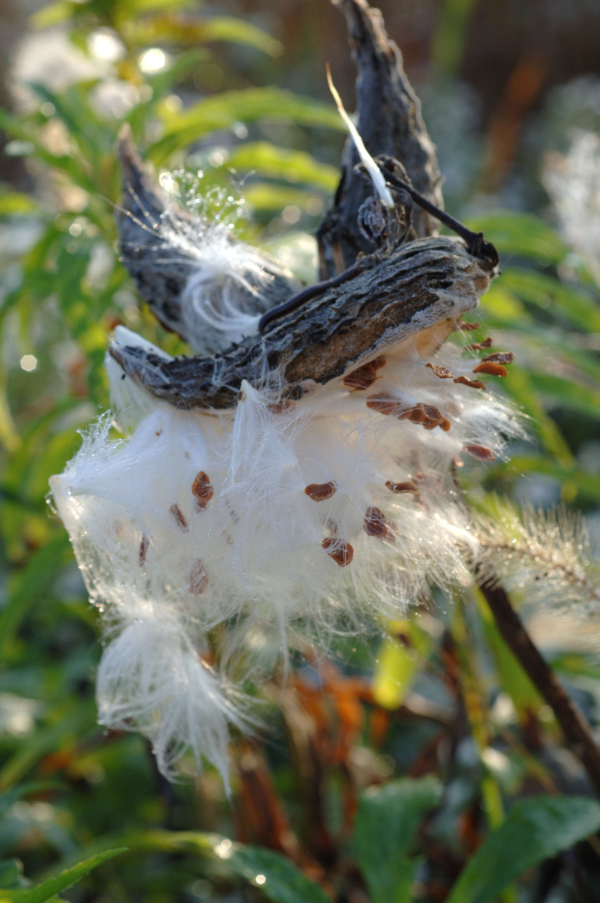California: Fifteen Agencies Collaborate to Support Monarch and Pollinator Conservation Efforts

State and federal agencies in California are joining forces to address the decline of monarch butterflies and other pollinator species in the state. The Multi-Agency Monarch and Pollinator Collaborative aims to facilitate long-term conservation of the western population of the migratory monarch butterfly and its habitats, as well as other pollinator species in the state.
“Monarchs and other pollinators are critical to maintaining ecosystem resilience and preserving California’s biodiversity,” said California Department of Fish and Wildlife (CDFW) Director Charlton H. Bonham. “It will take a collective effort between agencies to make significant headway toward the state’s conservation goals and recover pollinator populations.”
Recent surveys reveal a positive turn for the monarchs. The 2023 count of overwintering monarchs along the California coast showed a robust population of more than 330,000 butterflies. This represents more than a thousandfold increase over the all-time low count of less than 2,000 individuals in 2020.
“We are encouraged by the promising recent reports of overwintering western monarchs in California and remain committed to working with others to implement conservation actions that benefit all pollinators,” said U.S. Fish and Wildlife Service Pacific Southwest Regional Director Paul Souza.
Despite the recent increase, scientists estimate that western monarchs have declined by approximately 80 percent since the 1980s due to loss of breeding habitat and coastal overwintering habitat, climate change and the effects of pesticides.
Western monarchs still have a long way to go to recover and the Collaborative hopes to make a difference. The group will identify, adopt, promote and implement ecosystem-based management approaches that can be applied within each partner’s jurisdiction to support the western migratory population of the monarch butterfly and other pollinators in California.
“I had a chance to witness monarch migration this winter on the Monterey Peninsula, and it moved me deeply,” said California Natural Resources Secretary Wade Crowfoot. “Butterflies, bees and other pollinators are not only beautiful, but also essential to our environment and food production. They are resilient, but they need our help more than ever before. This partnership represents so much promise to provide the support that pollinators need to thrive.”
The member agencies include CDFW, U.S. Fish and Wildlife Service, California Coastal Commission, California Department of Food and Agriculture, California Department of Parks and Recreation, California Department of Pesticide Regulation, California Department of Transportation, Wildlife Conservation Board, U.S. Department of Defense, U.S. Department of Agriculture’s Natural Resources Conservation Service, U.S. Forest Service, U.S. Bureau of Land Management, U.S. Geological Survey, National Park Service, and California Natural Resources Agency.
The Collaborative is basing its priorities on two initiatives: (1) the Western Association of Fish and Wildlife Agencies’ 50-year Monarch Conservation Plan, and (2) the June 2022 Western Monarch Summit, initiated by Senator Jeff Merkley (D-OR), which laid out a set of short-term priorities aimed at improving monarch outcomes in the west.
Combined, the member agencies manage much of the state and federal land in California. These public lands comprise nearly 50 percent of California’s total land area. Due to its broad participation, the group is well-positioned to maximize its impact on California’s monarch and pollinator habitats.
The Collaborative’s work will also be applicable to private landowners and the general public that want to voluntarily engage in this framework.
“Many participating agencies, including the California Department of Food and Agriculture, work closely with private landowners to increase opportunities for pollinator conservation across various land uses,” said Secretary for Agriculture Karen Ross. “Public-private partnerships are a key ingredient to effective pollinator conservation.”
Agricultural regions of the state have been identified as critical to monarch recovery by the planning documents the Collaborative is adopting.
“The Natural Resources Conservation Service (NRCS) proudly assists California’s farmers and ranchers in voluntary implementation of conservation practices, including the planting of many miles of hedgerows over the last decade. Actions like these can support monarchs on California’s agricultural lands,” said NRCS California State Conservationist Carlos Suarez. “NRCS is thrilled to continue work like this in collaboration with the Multi-Agency Pollinator Collaborative.”
To increase the likelihood that conservation efforts will succeed, the Collaborative is also working to share the most up-to-date scientific and management information.
“We proudly support the collaborative with the best available science to enhance management decisions that target pollinator conservation,” said U.S. Geological Survey Southwest Regional Director Eric Reichard. “Our goal is to proactively share impartial information and methodologies to facilitate our partner’s conservation objectives.”
Ultimately, the goal of the Collaborative is to help catalyze monarch and pollinator conservation in California by building on the recent increase of monarch butterflies.
Armando Quintero, Director of the California Department of Parks and Recreation, added, “This collaborative will provide a venue for us to share knowledge and work together across California to help migratory monarchs and other native pollinators, by focusing our conservation efforts where they are needed most.”






